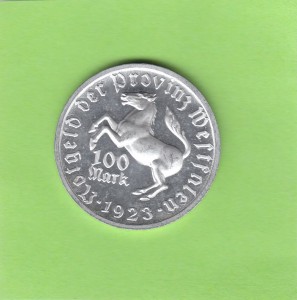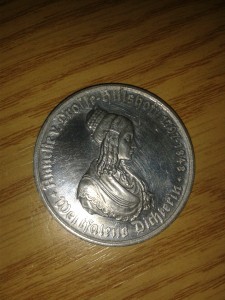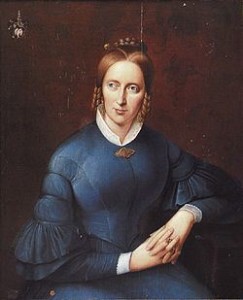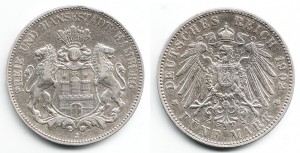My placement @HarrisPreston truly begins
The Harris Museum’s location in Preston
Last Wednesday I returned to the Harris Museum for the first real day of my placement there.
The focus was picking which coins and notes will be included in the display of World War One coinage that I and 2 other students from Lancaster University will be making. I am in charge of the German coins, and let me tell you, there are A LOT of really interesting coins from the 1914-1918 period. Worse, we are meant to be showing the change that occurred, so we also had to look through the coins and notes from directly before and after WW1. This was a lot of coins to fit into a fairly small case with coins from two other countries. I hope to explain the coins we chose after the display is installed so I won’t spoil which ones ended up making the cut (you can wait till the end of April to either read this blog or visit the Harris and see it in person!).
Below are 2 coins that I found very interesting but that sadly did not quite make the cut.
- The first is a Westphalia inflation issue emergency token, which was called a ‘notgeld’ in Germany. This particular coin was worth 100 marks, and it was produced in 1923.
What is strange about this coin, other than the fact that it was made by a specific part of Germany, and was worth 100 marks!, is the figure on it.
The woman is Annette von Droste-Hulshoff, and she was a 19th century German poet and author.
Here’s a portrait of Annette von Droste-Hulshoff, looking very dignified:
Portrait of Annette von Droste-Hülshoff by Johann Joseph Sprick (1808–1842)http://commons.wikimedia.org/wiki/File:Droste-H%C3%BClshoff_2.jpg
She wrote Die Judenbuche (The Jew’s Beech) in 1842, which may have been one of the world’s first murder mysteries. She also had an unfinished tragedy called Berta oder die Alpen (“Berta, or The Alps”), in which she wrote: “Too manly is your spirit, striving far too high into heights where no woman’s eye can follow. It’s this that constricts your breast with such anxiety and makes your youthful cheeks grow pale. If women climb beyond their sphere, they flee their own, better selves.”
- The second coin was made by thecity of Hamburg in 1902. What was interesting about this coin was, first, it was made by a city before WW1, and, two, the design was amazing.
Just look at that eagle!
The reason why an individual town was making its own money at this time was probably tied to Hamburg’s place within the Hanse, a reference to the Early Modern Hanseatic League that Hamburg along with many other market towns along the coast of Northern Europe. It was a very productive start to my placement at the Harris and I look forward to going back and starting work on conserving my German coins!




